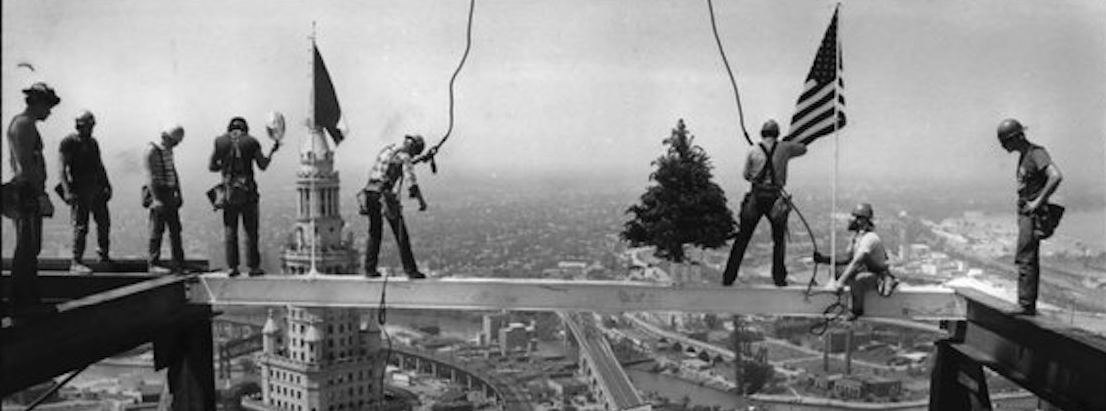from the Ohio Historical Society
Marcus Alonzo Hanna was a prominent politician and United States Senator from Ohio during the late nineteenth and the early twentieth centuries.
Hanna was born on September 24, 1837, at New Lisbon, Ohio. His parents were members of the Society of Friends, and Hanna adopted their religious beliefs, as well as their hatred of slavery. In 1852, the Hanna family moved to Cleveland, Ohio, where Hanna attended high school. One of his classmates was John D. Rockefeller. In 1857, Hanna enrolled in the Western Reserve College, but he was expelled the following year for participating in a prank.
After leaving college, Hanna became a salesman for his father’s wholesale grocery business. He played a minor role in the American Civil War, serving as one of Ohio’s Hundred Days Men in 1864. He saw no combat while serving on garrison duty at Washington, DC. and left the army with the rank of second lieutenant. Upon completion of his brief military service, Hanna returned to Cleveland, where he managed his father’s business. He also began to refine oil. In 1867, his oil refinery caught fire and was destroyed. Hanna transferred money from his other business ventures, causing them all to fail. Later in that same year, he took a job with Rhodes & Co. a business owned by his father-in-law. The company was involved in coal and iron mining in Ohio and nearby states.
Hanna recovered financially and invested in the Globe Shipbuilding Company, which built large steel freighters for use on the Great Lakes. During the 1880s, he also briefly owned the Cleveland Herald newspaper. Hanna established the Union National Bank in 1884, and helped create Little Consolidated, a company that specialized in street railway transportation.
After becoming a successful businessman in the 1880s, Hanna began to participate in politics. He was a life-long supporter of the Republican Party. In the first presidential election in which Hanna voted, he cast his ballot for Abraham Lincoln. Hanna utilized theHerald to endorse Republican issues. By the middle 1880s, Hanna was one of the most powerful Republicans in Ohio, although he had never served in an elected office. He was a close ally of Ohio Governor Joseph Foraker, but the two men became bitter enemies after Hanna allied himself with John Sherman and William McKinley.
During the late 1880s and 1890s, Hanna donated large amounts of money to Sherman and McKinley to assist them in their campaigns for political office. In 1891, Hanna’s efforts helped secure Sherman’s reappointment to the United States Senate and McKinley’s election as Ohio governor. In 1894, Hanna stepped down as the head of his many companies and dedicated himself to electing McKinley President of the United States. In the election of 1896, Hanna served as the chairman of the Republican National Committee and used more than 100,000 dollars of his own money to secure McKinley’s nomination.
He also established a grassroots movement to help McKinley win the presidency. He brought pressure on businessmen across the United States and warned them that the Democratic Party’s candidate, William Jennings Bryan, opposed large businesses. Hanna’s efforts won McKinley the presidency. His actions earned him a reputation as an unscrupulous person, who favored the wealthy over the poor.
Upon becoming president, McKinley offered Hanna a position in the cabinet. Hanna refused, preferring to seek an appointment to the United States Senate. McKinley appointed Senator John Sherman as Secretary of State and this opened up a Senate seat. Ohio’s governor, Asa Bushnell, immediately appointed Hanna to the Senate. After a controversial election within the Ohio legislature, Hanna was reappointed to the Senate in 1898. As a senator, Hanna was President McKinley’s strongest ally in the Congress. His greatest success was convincing the Congress to build the Panama Canal. Upon McKinley’s death in 1901, Hanna remained one of the nation’s most powerful Republicans. In 1903 and 1904, many Republicans contemplated nominating Hanna for the presidency rather than Roosevelt. Hanna withdrew from consideration and supported Roosevelt’s nomination.
In 1903, the Ohio legislature reappointed Hanna to the Senate. Shortly after returning to Washington, DC, Hanna became ill. He died on February 15, 1904.
